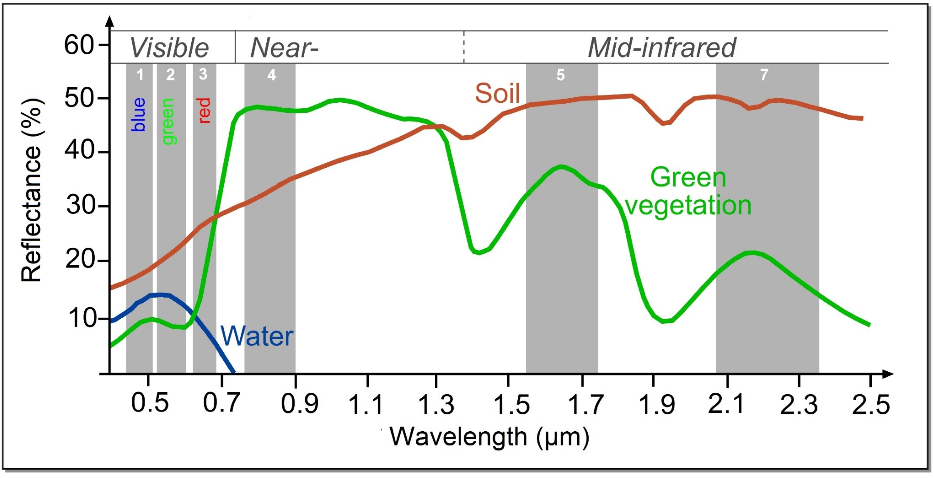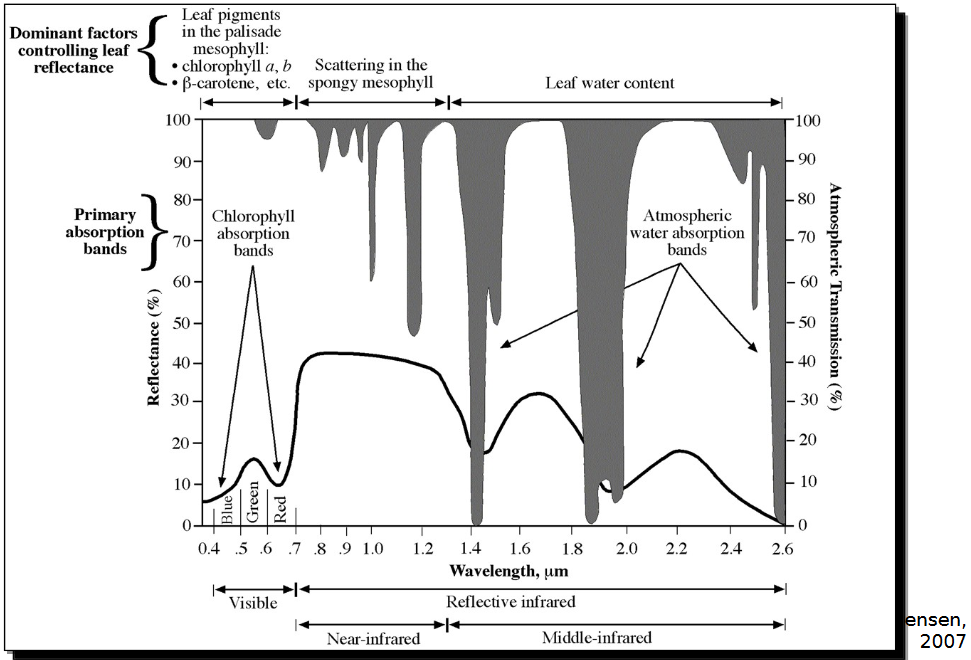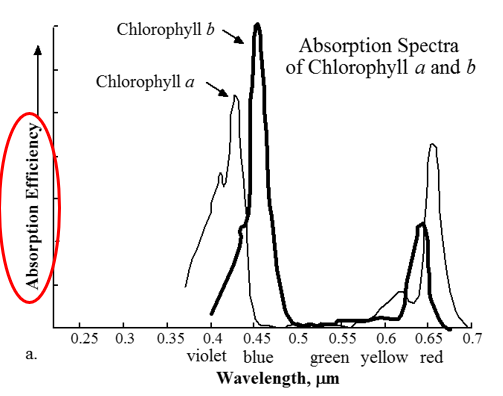Remote sensing of vegetation
Tags :: Remote Sensing
Vegetation
Vegetation covers 70% of Earth’s surface. Applies to a variety of landscapes:
- Agriculture
- Wetlands
- Forests
- Rangeland
Variety of research applications:
- LULC (Land Use Land Cover)
- Biodiversity
- Habitat
- Biofuel
- Carbon Sink
For an example see the Maryland Deforestation EE application.
Spectral Curve
Electromagnetic radiation is packed into sugar molecules made from water and carbon dioxide with the help of chlorophyll.
This has a direct effect on the spectral reflectance of leaves/canopy.
\[ 6CO_2 + 6H_2O + \text{light energy} \rightarrow C_6H_{12}O_6 + 6O_2 \]


It can be seen that blue and red light are highly absorbed, and green is also absorbed a lot but less than blue and red. NIR bands are reflected the most.
NIR reflectance is caused by the structure of the plant, specifically the spongy mesophyll.
Higher wavelengths are used to monitor water content.

Spongy Mesophyll
Controls NIR reflectance.
40-60% of NIR is reflected.
NIR is not used for photosynthesis, so it either transmits through the leaf or is reflected.
Middle Infrared (MIR)
MIR interacts with certain forms of water:
- Atmospheric water vapor absorption bands
- Leaf water content (spongy mesophyll) around 1.6 and 2.2 \(\mu m\)
There is a strong relationship between MIR reflectance and the water present in the tree canopy.
MIR can also provide information about the relative turgidity of a plant leaf.
Transpiration
Water movement through a plant and its evaporation from aerial parts.
Can be used as a proxy for vegetation health.
Bidirectional Reflectance Distribution Function (BRDF)
Describes the twofold relationship between the reflected radiance of a terrain surface, the geometry of the sun’s radiance, and the geometry of the sensor.
BRDF can be described as the ratio of radiance to irradiance.
Variables
- Illumination: Sun geometry and spectral characteristics.
- Sensor: Geometry, spectral resolution, and IFOV.
- Vegetation: Canopy type, closure %, orientation, crown shape, crown diameter, trunk density, trunk diameter at breast height (DBH), leaf-area-index (LAI), leaf-angle-distribution (LAD).
- Understory: Same as vegetation.
- Soil: Texture, color, moisture content.
- Hot spots: Similar to sun glint.
Spectrometry of Vegetation
In situ data of vegetation is collected to calibrate data from aerial sensors.
This allows for the extraction of certain vegetation types and conditions.
Temporal Characteristics of Vegetation
Vegetation remote sensing is highly dependent on the timing of data collection.
It requires knowledge of the plant’s growth cycle.